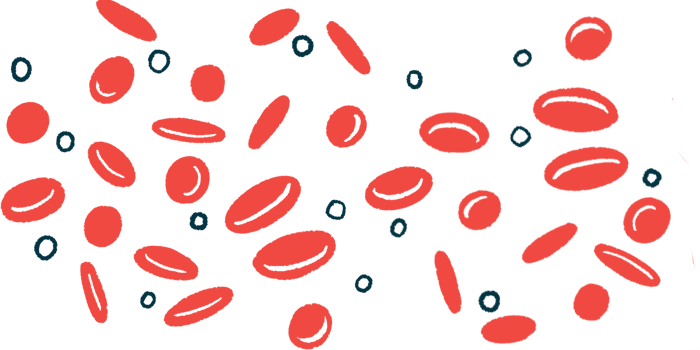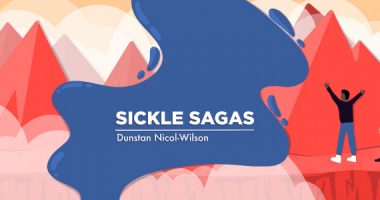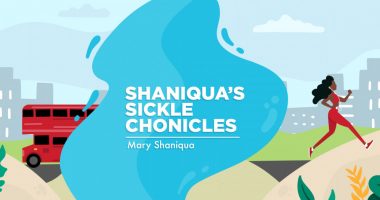Blood Vessel Narrowing, Reduced Flow May Drive SCD Pain Crises

Blood vessel narrowing due to external or internal stimuli, and the resulting reduced blood flow, may be the main drivers of the painful vaso-occlusive crises experienced by people with sickle cell disease (SCD).
Inducing stimuli for such blood vessel narrowing include mental stress, pain, and extreme temperatures, either low or high.
These are the main findings of ongoing research led by Thomas Coates, MD, section head of hematology within the Cancer and Blood Disease Institute at Children’s Hospital Los Angeles (CHLA). The research is being supported by a five-year, $9.5 million grant from the National Institutes of Health (NIH).
Understanding why people with SCD experience debilitating pain crises — and identifying predictive biomarkers of such events — could help in the development of successful prevention strategies.
“It could be possible that by wearing a device on their wrist, a patient could monitor their blood flow, and if it is decreasing, they could take a medication that would reverse the process and, hopefully, prevent a crisis,” Coates said in a press release.
Other preventive measures also could be taken, such as wearing warm clothes when it’s cold and practicing relaxing techniques such as hypnosis.
People with SCD often experience bouts of extreme pain due to sickle-shaped red blood cells clumping together and clogging small blood vessels, preventing a healthy supply of oxygen to tissues. These episodes, called vaso-occlusive crises (VOCs) or pain crises, can last many days and are the main cause of hospital admissions among this patient population.
Despite their well-established debilitating effects, scientists have not yet figured out what causes the change from steady state to pain crisis. Notably, patients and their families have reported that VOCs most often occur after experiences involving mental stress, anxiety, pain, or exposure to extreme temperatures.
“Mothers are always saying to their kids, ‘Dress warmly, wear a hat, because if you get cold you are going to have a crisis,’” Coates said.
Such reports have inspired his current research focus: the role of the autonomic nervous system, which controls body functions that occur unconsciously, such as heart rate and blood vessel narrowing, known as vasoconstriction, in SCD.
Through a series of studies, Coates and his team found that exposure to cold, heat, or a painful stimulus, or doing tasks that cause some degree of mental stress, rapidly promote vasoconstriction in people with SCD.
“We showed that mental stress, pain and cold can cause an 80% reduction in blood flow, within seconds,” Coates said.
Notably, this is consistent with the findings of a previous study in which SCD patients were asked to record their daily pain and stress symptoms on a phone app. Those results showed an association between higher stress levels and higher pain intensity.
Now, Coates’ team also found that SCD patients “who have more vasoconstriction and low blood flow tend to have more pain crises,” suggesting that reductions in blood flow could be a predictive biomarker of VOCs.
Blood flow can be estimated through available technology — like the red-lighted fingertip oxygen sensor commonly seen in the hospital, or the green light behind smart watches that measures heart rate — and mathematical modeling.
Researchers also are evaluating whether cognitive-based interventions, which focus on teaching people with SCD how to calm their mind and body, could help them prevent pain crises.
“We definitely won’t replace mainstream therapies, but if these cognitive-based therapies translate into patients having fewer hospitalizations or emergency room visits, and that they can continue with their day-to-day life, that is valuable,” said Payal Shah, a senior research associate at CHLA.
The promising findings of a previous pilot study, which showed that a 30-minute hypnosis session increased blood flow in SCD patients, prompted the launch of a larger trial to confirm these results.
Hypnosis aims to induce a trance-like state in which the person has heightened focus and concentration while feeling relaxed and calm. This type of cognitive-based neuromodulatory intervention has been shown to be an effective method for coping with stress and anxiety, and has been associated with reductions in acute and chronic pain.
“I always like to promote open-mindedness in terms of considering these other evidence-based and effective interventions for pain,” said Sarah R. Martin, PhD, a clinical psychologist who led the larger study and is now an assistant professor at the University of California–Irvine’s Center on Stress and Health.
In that study, Martin guided half of the participants through a hypnosis exercise in which they were asked to imagine creating a comforting medication for their pain. The other half listened to stories read by her, and comprised the control group. All participants wore a thermal metal device in their arm that caused slight pain.
Researchers found that people in the hypnosis group reported less pain and showed less blood flow reduction relative to those in the control group.
The team now aims to conduct a study to assess how hypnosis affects blood flow over time in teenagers with SCD. Study participants would practice self-hypnosis at home, use a cognitive-based therapy app, and wear a device on their wrist, similar to a fitness tracker, to measure vasoconstriction.
These measures would allow researchers to remotely assess the effects of hypnosis on patients’ blood flow. Coates believes such study findings could have long-term effects on how SCD is monitored and managed.
Notably, his team is also investigating why some SCD patients have frequent pain crises while others do not.
“We are looking at whether it’s due to differences in their autonomic nervous systems,” said Saranya Veluswamy, MD, an attending physician at the CHLA’s Cancer and Blood Disease Institute. “Are people who have an autonomic nervous system imbalance more prone to pain?”
Coates says people ask him about what takeaways have resulted from the $9.5 million in research funding he’s received from the NIH.
“I say, ‘Well, you should listen to mothers,’” Coates said.








